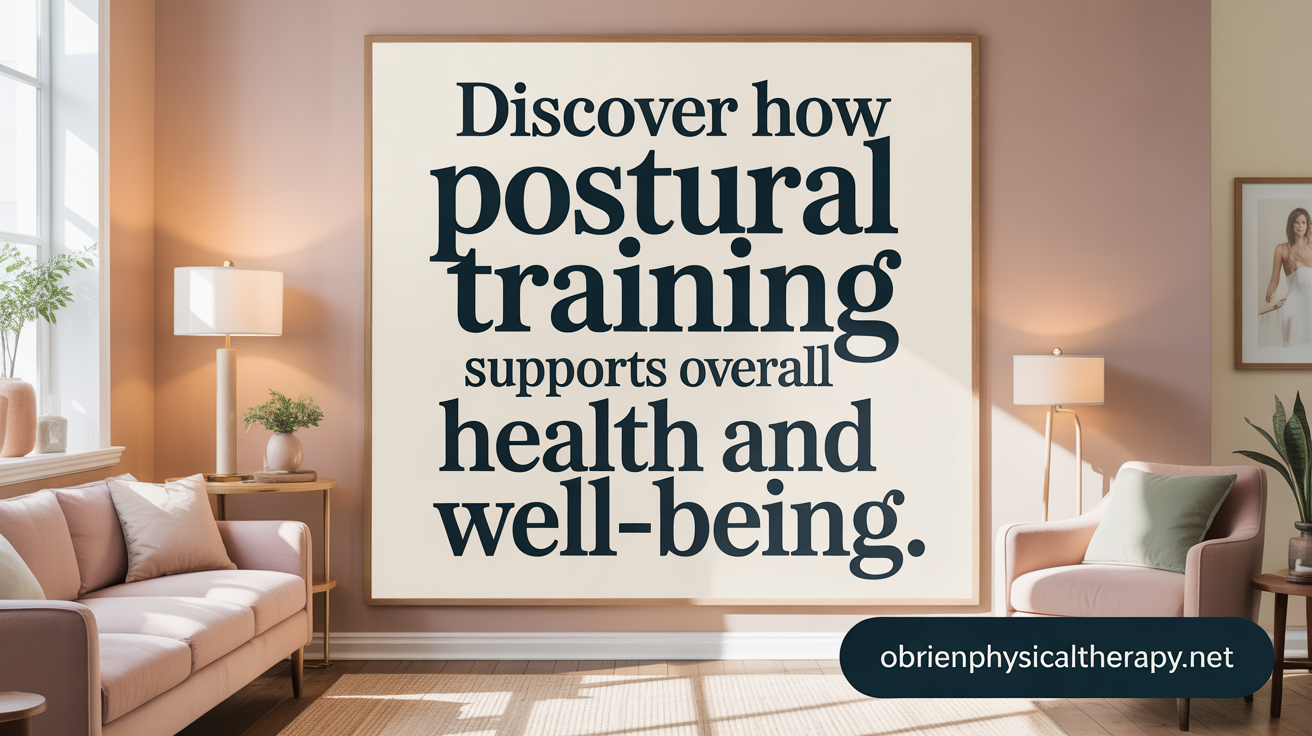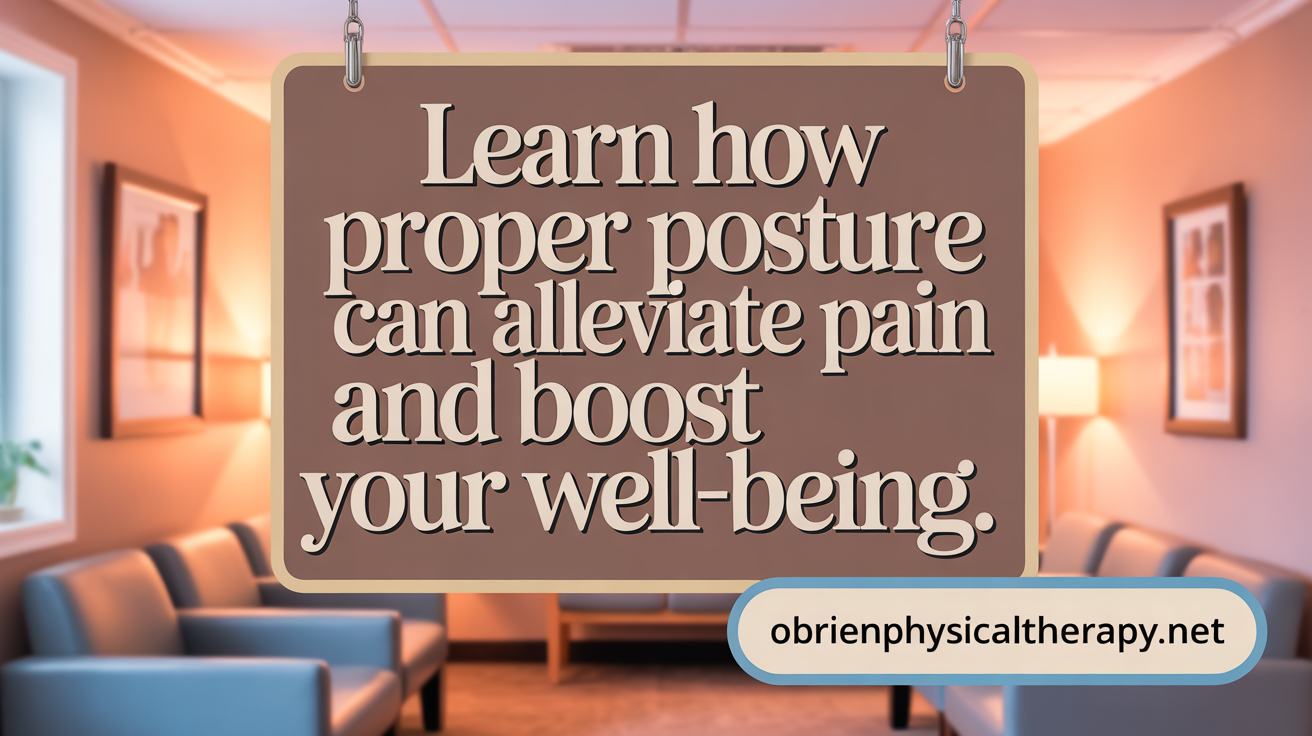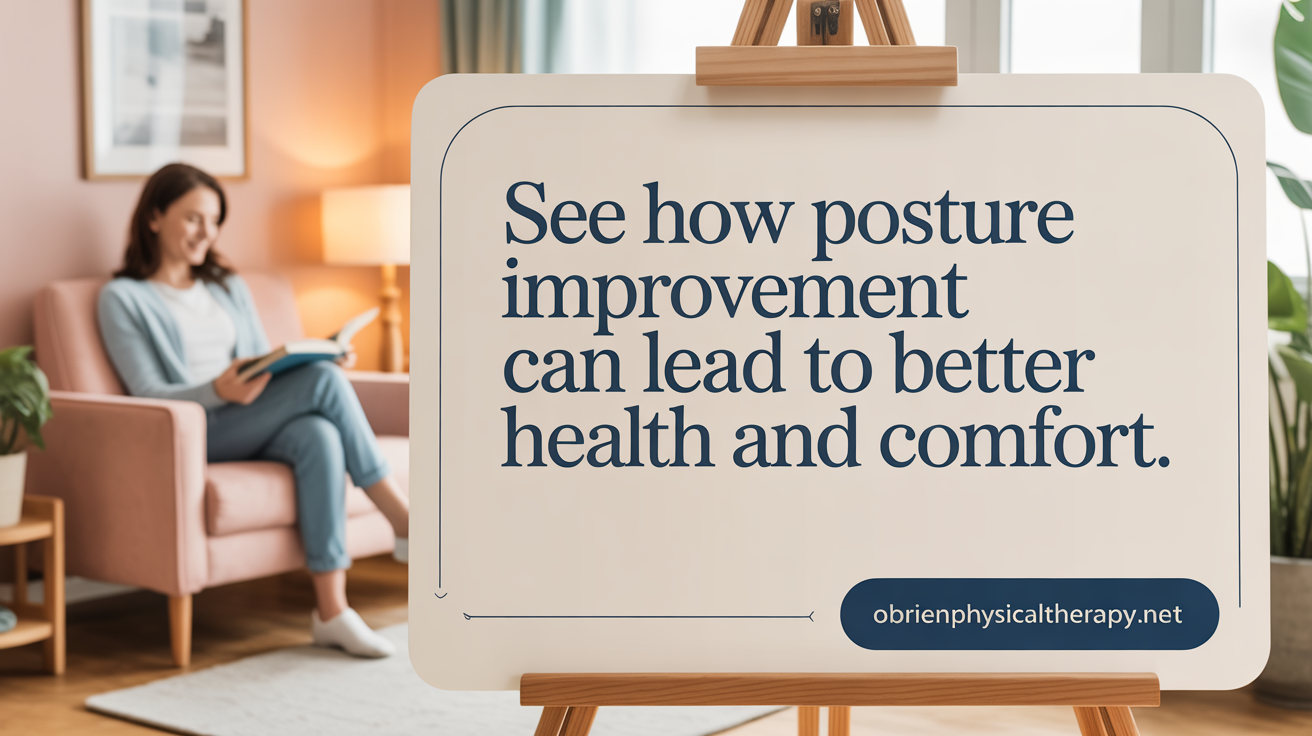Understanding the Essence of Postural Training
Postural training is a cornerstone of effective physical therapy, fostering better alignment, muscle balance, and functional movement. This article explores why postural training is crucial, how it benefits health, the techniques involved, and the vital role physical therapy plays in promoting proper posture for lasting well-being.
What is Postural Training and Its Importance in Physical Therapy?

What is postural training and why is it important in physical therapy?
Postural training is a focused part of physical therapy that involves teaching individuals exercises and techniques to improve their body alignment, balance, and muscle control. The goal is to develop correct posture, which is vital for efficient movement and overall health.
Good posture reduces strain on muscles and joints, preventing pain and injuries that can result from poor alignment. It also promotes better organ function, circulation, and respiratory health. Proper postural control helps stabilize the body during daily activities, reducing the risk of falls and musculoskeletal issues.
This training often addresses why poor posture develops, such as muscle weakness, sedentary habits, or ergonomic problems at work and home. Physical therapists create personalized programs that include manual therapy, targeted exercises, and education to correct these issues.
A crucial aspect of postural training involves improving balance in three areas:
| Postural Control Aspect | Description | Importance |
|---|---|---|
| Steady-state balance | Maintaining posture while still | Ensures sustained proper alignment |
| Reactive balance | Recovering stability after disturbance | Prevents falls and injuries |
| Proactive balance | Anticipating movement to adjust posture | Prepares the body for activities and prevents strain |
By enhancing these aspects, postural training helps individuals maintain better stability and prevent strain during movement.
Addressing muscle imbalances—where some muscles are weak and others are tight—is critical. Sedentary lifestyles and poor ergonomics contribute to postural issues, leading to discomfort and musculoskeletal injuries.
Physical therapists integrate manual therapy to release tight muscles and strengthen weak areas, complemented by educational strategies on proper body mechanics and ergonomic adjustments.
Because every individual’s needs are different, personalized interventions are essential. This tailored approach ensures that exercises and therapy techniques effectively correct specific postural problems, leading to long-term benefits and better quality of life.
Health Benefits and Pain Reduction Through Postural Training

What are the benefits of postural training for health, pain reduction, and posture correction?
Postural training is highly effective in improving overall health by promoting proper alignment of bones, muscles, and joints. It helps strengthen the core muscles—such as those in the abdomen, back, and hips—which are crucial for stabilizing the spine and maintaining good posture.
Many individuals experience relief from common pains associated with poor posture, such as back, neck, and shoulder discomfort. Regular exercises like stretching, strengthening, and ergonomic adjustments have been shown to significantly reduce strain and muscular fatigue. For instance, studies indicate notable pain relief in the shoulders, mid-back, and lower back after several weeks of consistent postural training.
Improving posture can also positively impact internal organ function. Proper alignment supports efficient breathing and digestion by preventing compression of the thoracic and abdominal cavities. Better posture enhances physical performance, making movements more effective and reducing the risk of injury.
Beyond physical health, postural training boosts confidence and mental well-being. Standing tall and maintaining good posture often leads to increased self-esteem and a positive outlook. Employing manual therapy techniques, along with professional guidance, can further assist in correcting structural imbalances.
By focusing on habits that promote correct body mechanics, individuals can prevent musculoskeletal strain and structural deformities. Overall, investing in postural training leads to long-term health benefits, improved mobility, and an enhanced quality of life.
Techniques and Methods Utilized in Postural Training

What techniques and methods are commonly used in postural training?
Postural training employs a diverse range of techniques to help individuals achieve better alignment, stability, and muscle balance. Core strengthening exercises form the foundation, with activities such as planks, bridges, and wall angels targeting the back, neck, and abdominal muscles to support proper posture.
Flexibility routines are equally important. Stretching exercises and yoga poses like Child’s Pose, Pigeon Pose, and spinal twists help lengthen tight muscles that may pull the body out of alignment. These routines enhance overall mobility and reduce strain.
Sensorimotor and proprioceptive training exercises are utilized to improve balance and neuromuscular control. Tools such as balance boards, foam pads, and perturbation exercises challenge stability, encouraging the body to respond effectively to maintain proper posture during movement.
Ergonomic education and body awareness practices are an integral component. Techniques like the Alexander Technique or postural mindfulness teach individuals to recognize and correct everyday habits that contribute to poor posture, promoting conscious movement and alignment.
Advanced assessment methods support tailored interventions. Asset evaluations may include motion capture technology, electromyography (EMG) to measure muscle activity, and force platforms to analyze pressure distribution. These tools enable therapists to develop personalized training programs based on precise data.
Manual therapy techniques, including joint mobilization and soft tissue massage, are often incorporated to enhance flexibility and reduce muscular tightness that hinders proper posture.
Movement retraining and neuromuscular reeducation focus on retraining proper movement patterns. Exercises are designed to correct faulty biomechanics, improve coordination, and support long-term postural habits.
Furthermore, aquatic therapy in heated pools offers a low-impact environment ideal for postural correction. The buoyancy reduces joint stress while enabling strength building, flexibility improvement, and pain relief.
Together, these methods aim to restore balance, improve muscle function, and promote sustainable, healthy postural habits that reduce discomfort and prevent injury.
Impact of Posture Correction on Health Outcomes and Back Pain

How does posture correction impact health outcomes, particularly related to back pain?
Correcting posture has a meaningful effect on overall health by reducing stress on the spine and surrounding muscles. When the body is properly aligned, it decreases abnormal strain that often leads to discomfort and long-term damage. For individuals suffering from chronic back pain, posture correction techniques like targeted exercises, manual therapy, and ergonomic adjustments have shown to significantly lessen pain levels across the shoulders, mid-back, and lower back zones.
Maintaining good posture helps prevent muscle strain, inflammation, and joint degeneration—common issues in sedentary populations such as students and office workers. Regular movement, stretching, and strengthening exercises contribute to restoring muscular balance and spinal alignment over time. These interventions not only alleviate existing pains but also serve as preventive measures against future problems.
While achieving and maintaining a perfect 'ideal' posture may not be necessary, adopting a flexible and personalized approach is recommended. The emphasis should be on fostering awareness, improving functional movement, and making ergonomic choices. Such strategies support better comfort, reduce injury risk, and improve overall well-being.
Research suggests that improvements in posture—whether through exercises, education, or ergonomic modifications—correlate with better health outcomes. Nonetheless, posture correction should be integrated into comprehensive rehabilitation programs tailored to individual needs, rather than treated as a standalone fix. This holistic approach enhances the benefits and promotes sustained health benefits.
Physical Therapy’s Role in Promoting Proper Posture and Preventing Injury
How does physical therapy address postural issues and promote proper posture?
Physical therapy plays a crucial role in correcting postural misalignments and preventing related injuries. It begins with thorough assessment of posture, muscle imbalances, and movement patterns. Skilled therapists identify deviations such as rounded shoulders, forward head, or uneven hips using visual and physical evaluations. Based on these findings, they develop personalized treatment plans that combine stretching tight muscles, strengthening weak areas, and applying manual therapy techniques like joint mobilization and soft tissue massage.
Therapeutic exercises such as shoulder blade squeezes, core activation, and thoracic extensions are tailored to each individual to enhance support and stability. Advanced approaches, including neuromuscular reeducation and proprioceptive training, further reinforce correct movement patterns. Education on ergonomic habits and daily body mechanics empowers patients to maintain good posture during work, leisure, and daily activities, reducing the risk of chronic problems.
Overall, physical therapy not only alleviates existing discomfort but also actively fosters spinal stability and balanced support to improve posture long-term.
Embracing Postural Training for Lifelong Health
Postural training holds a pivotal role within physical therapy, offering powerful benefits that extend beyond pain relief to enhance overall health, mobility, and well-being. By combining thorough assessment, targeted exercises, manual therapy, and education, physical therapists empower individuals to correct misalignments, strengthen vital muscle groups, and practice sustainable habits. The comprehensive approach to posture not only prevents injuries and chronic pain but also promotes better breathing, digestion, and confidence. Embracing postural training as part of rehabilitation and daily life ensures improved quality of life and fosters long-term musculoskeletal health that supports functional independence and vitality.
References
- Physical Therapy for Postural Imbalances: How It Helps and Why It ...
- The Power of Posture Correction - Rocky Mountain Physical Therapy
- Physical Therapy for Improving Posture and Reducing Pain
- The Importance of Posture and How Physical Therapy Can Help
- The Role of Physical Therapy in Preventing Postural Dysfunction
- How Physical Therapy Can Improve Posture and Reduce Pain
- Does Your Posture Need Retraining? — Physical Therapy in Brooklyn
- Posture and Movement Analysis in Physical Therapy: Why It Matters
